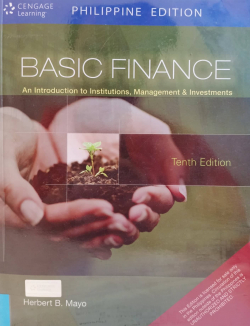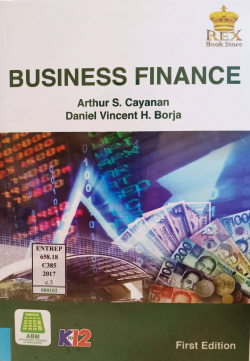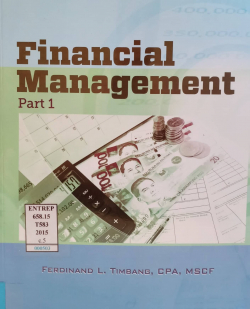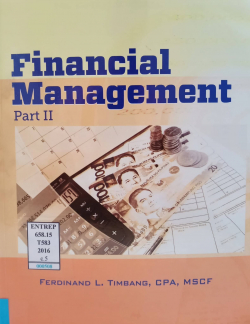Basic finance: an introduction to institutions, management & investments

Buy online ($)
Type
Book
Authors
Mayo ( Mayo, Herbert B. )
ISBN 13
9789814653060
Category
ENTREP
[ Browse Items ]
Publication Year
2016
Publisher
Cengage Learning Asia Pte Ltd, Philippines
Pages
xxv, 691 pages
Subject
Financial economics
Abstract
BASIC FINANCE: AN INTRODUCTION TO FINANCIAL INSTITUTIONS, INVESTMENTS & MANAGEMENT, 10E, by Herbert B. Mayo discusses the three primary aspects of finance-financial institutions, investments, and management and examines how they are interrelated using a modular format. Each chapter offers a concise, self-contained treatment of one or two finance concepts or institutions easily covered in a single class period. BASIC FINANCE, 10E, provides a strong finance foundation that students can build on using Internet resources and sample number problems, cases, and calculator solutions that use a Microsoft Excel appendix. The text introduces the time value of money using three approaches to reinforce the concept--interest tables, financial calculator keystrokes, and investment analysis calculator software created specifically for the Mayo books.
The book is divided into five parts: financial institutions, financial tools, corporate finance, investments, and derivatives. Few instructors will complete all the chapters. One advantage of short chapters is their adaptability to several approaches. If the course is meant to survey the field of finance, the instructor may select chapters throughout the text and place less emphasis on numerical problems. An alternative strategy is to approach finance through investments. Many students have an inherent interest in investments, especially since they can easily have their own on-line brokerage accounts. The course can be constructed to build upon this interest and expand topics into other areas of finance.
If the course emphasizes corporate finance, Part 3 is especially important, in conjunction with additional selected chapters ( e.g., time value of money, risk measurement, initial public offerings, and the descriptions of stocks and bonds). The self-contained chapters should facilitate converting the book into a text that is readily used in a traditional corporate finance course.
The book is divided into five parts: financial institutions, financial tools, corporate finance, investments, and derivatives. Few instructors will complete all the chapters. One advantage of short chapters is their adaptability to several approaches. If the course is meant to survey the field of finance, the instructor may select chapters throughout the text and place less emphasis on numerical problems. An alternative strategy is to approach finance through investments. Many students have an inherent interest in investments, especially since they can easily have their own on-line brokerage accounts. The course can be constructed to build upon this interest and expand topics into other areas of finance.
If the course emphasizes corporate finance, Part 3 is especially important, in conjunction with additional selected chapters ( e.g., time value of money, risk measurement, initial public offerings, and the descriptions of stocks and bonds). The self-contained chapters should facilitate converting the book into a text that is readily used in a traditional corporate finance course.
Description
Illustration ; Newsprint ; 23 cm
Includes appendices and index
Includes appendices and index
Number of Copies
5
| Library | Accession No | Call No | Copy No | Edition | Location | Availability |
|---|---|---|---|---|---|---|
| Main | 454 |
ENTREP 332 M473 2016 |
1 | ENTREPRENEURSHIP REFERENCE | Yes | |
| Main | 455 |
ENTREP 332 M473 2016 |
2 | ENTREPRENEURSHIP REFERENCE | Yes | |
| Main | 456 |
ENTREP 332 M473 2016 |
3 | ENTREPRENEURSHIP REFERENCE | Yes | |
| Main | 457 |
ENTREP 332 M473 2016 |
4 | ENTREPRENEURSHIP REFERENCE | Yes | |
| Main | 458 |
ENTREP 332 M473 2016 |
5 | ENTREPRENEURSHIP REFERENCE | Yes |




